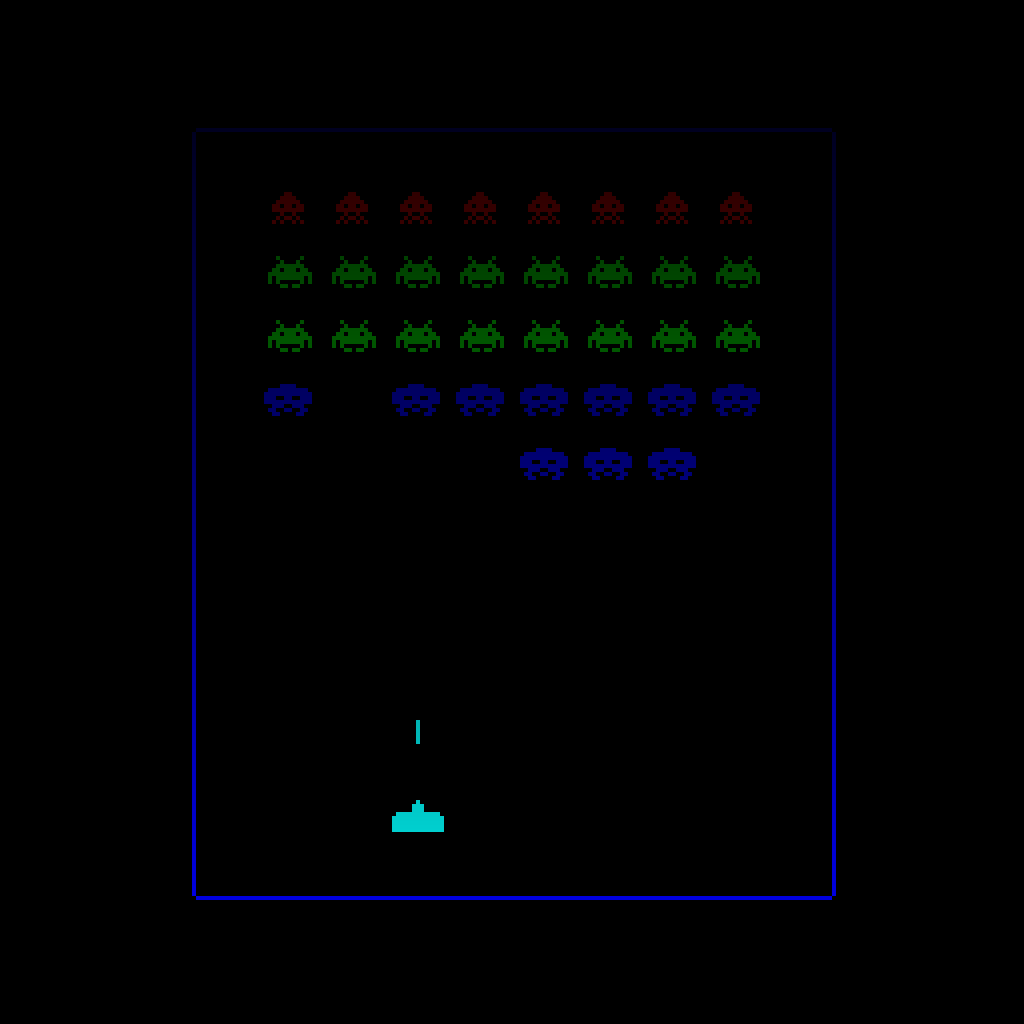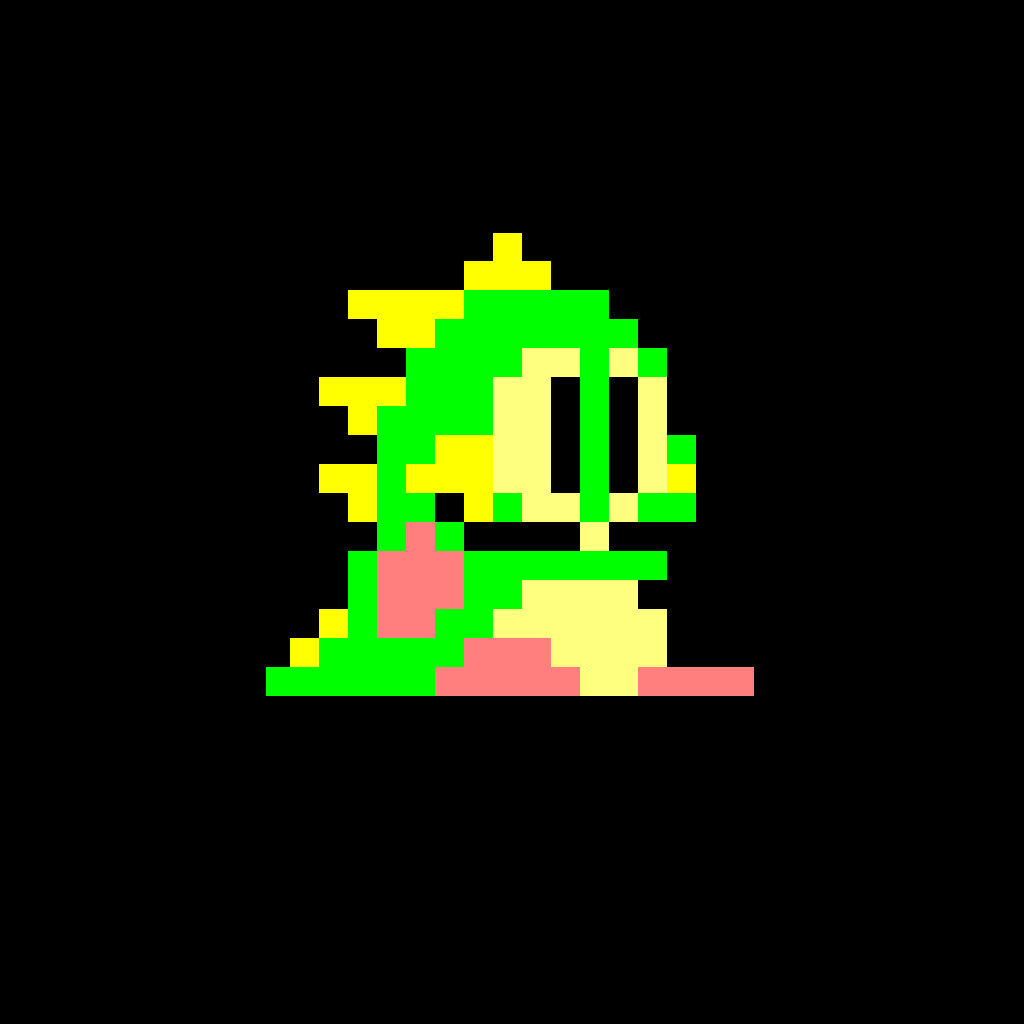Tribute to a classic
V1: Inspired by DreamWarrior's "Be happy", this straightforward submission embeds a small pixel-art image in each colour channel. I didn't even have to golf the code!
V2: now with considerably shorter code & a thick black border isolating only the "game screen".
V3: spaceship, bullet, damaged aliens and blue border, oh my! Trying to aim for this, roughly.
// RED
#define g(I,S,W,M)j/128%8==I&W>>(j/32%4*16+i/64)%M&S[abs(i/4%16-8)-(I%2&i%64<32)]>>j/4%8&1
return g(1,"_\xB6\\\x98\0\0\0",255L<<36,64)?j:0;
// GREEN
#define S g(6,"\xFF\xFE\xF8\xF8\xF8\xF8\xF0\x0",1L<<22,64)|i/4==104&j/24==30
return g(2,"<\xBC\xB6}\30p\0\0",4080,32)|S?j:0;
// BLUE
return g(3,"_7\xB6\xFE\x5E\34\0",0x70000000FD0,64)|S|abs(i/4-128)==80&abs(j/4-128)<96|abs(j/4-128)==96&abs(i/4-128)<80?j:0;

I happened to stumble upon an edit by Umber FerruleUmber Ferrule whose avatar inspired me to add another pixel-art-based entry. Since the core idea of the code is largely similar to the Space Invaders one, I'm appending it to this entry, though the two definitely had different challenging points. For this one, getting pink right (at the expense of white) and the fact that it's a rather big sprite proved nice challenges. The hexadecimal escapes (\xFF etc) in the red channel represent their corresponding characters in the source file (that is, the red channel in the source file contains binary data), whereas the octal escapes are literal (i.e. present in the source file).
// RED
#define g(S)(S[i/29%18*2+j/29/8%2]>>j/29%8&1)*DM1*(abs(i-512)<247&abs(j-464)<232)
return g("\xF3\xF2\xF2\x10\xF4\0\xF2\x10\xE1\xE0\x81\0\x80\0\x80\0\0\0\0\0@\0! \x03d8,=\x2C\x99\x84\xC3\x82\xE1\xE3");
// GREEN
return g(";\376z\34\377\374\372\30k\360\3\200\0\0\0\0\0\0\200\0\300\0\341 \373d\307\354\303\374e\374;\376;\377")? DM1 : BL(i,j)? DM1/2 : 0;
// BLUE
return g("\363\360\362\20\364\0\362\20\341\340\200\0\200\0\200\0\0\0\0\0\0\0\0\0\0\08\0<\0\230\0\300\0\341\340") / 2;


